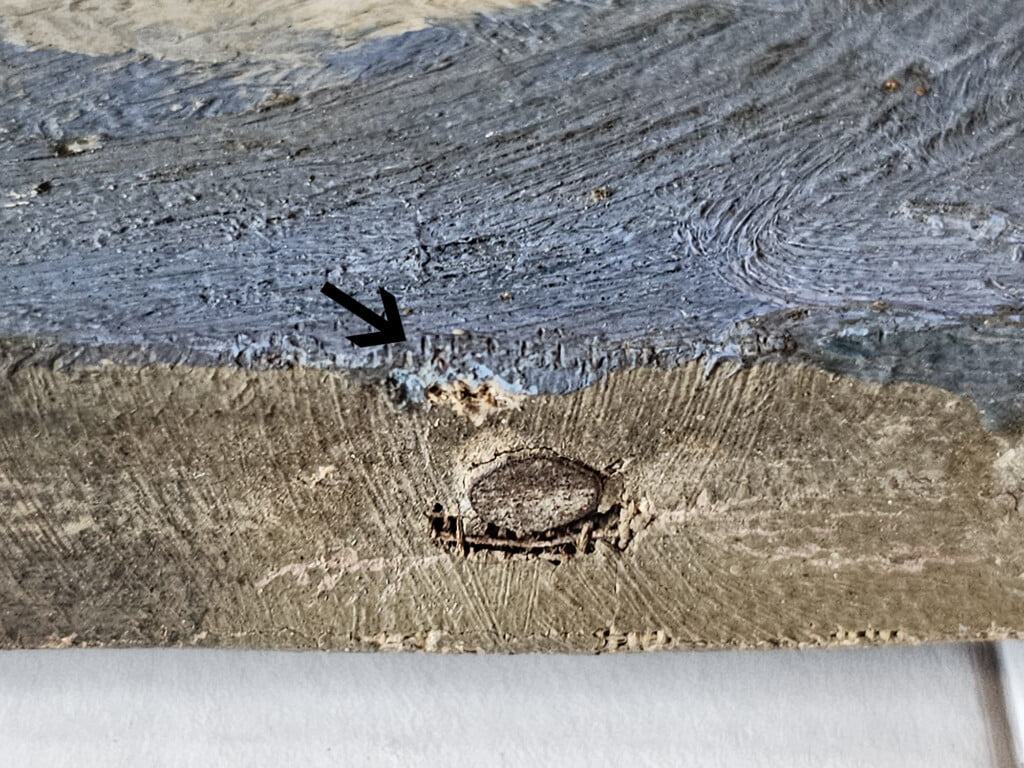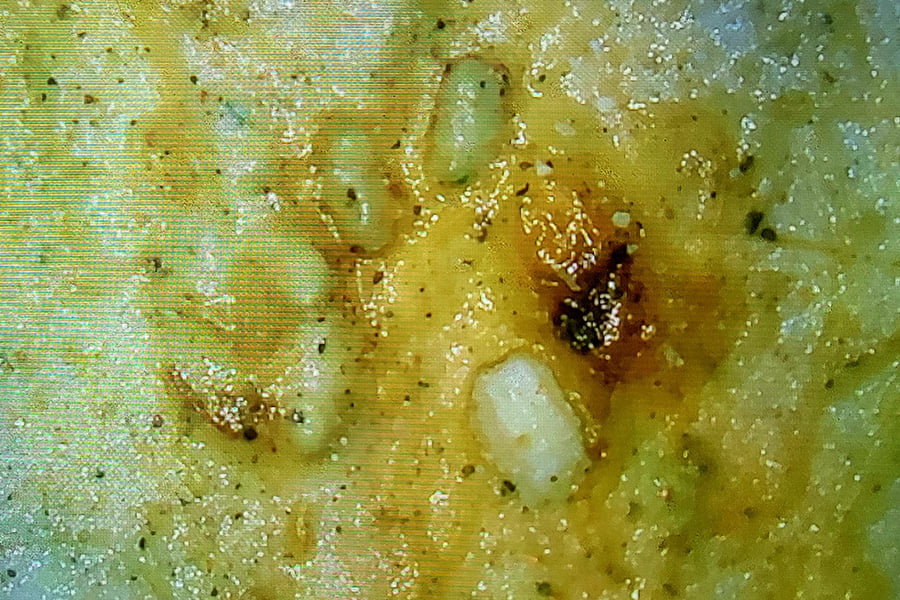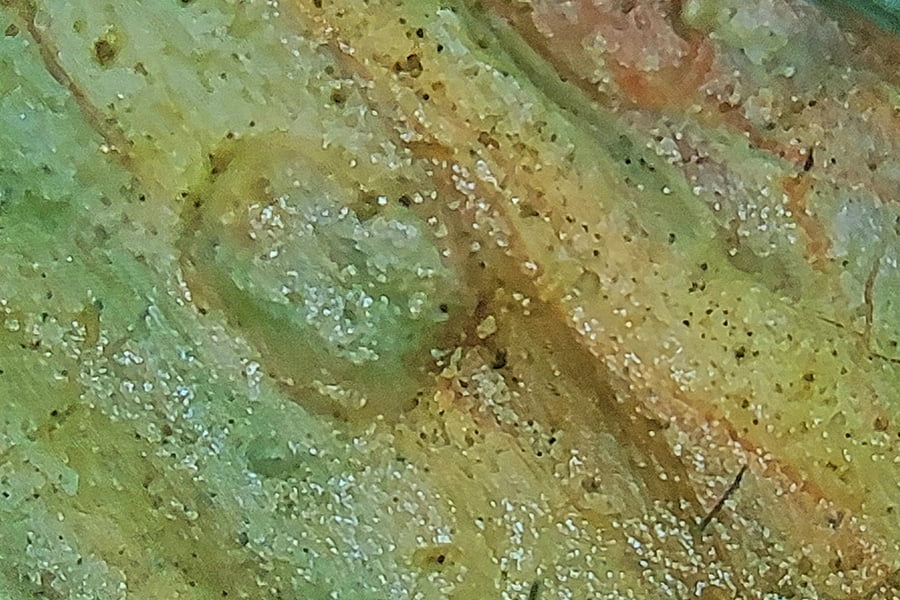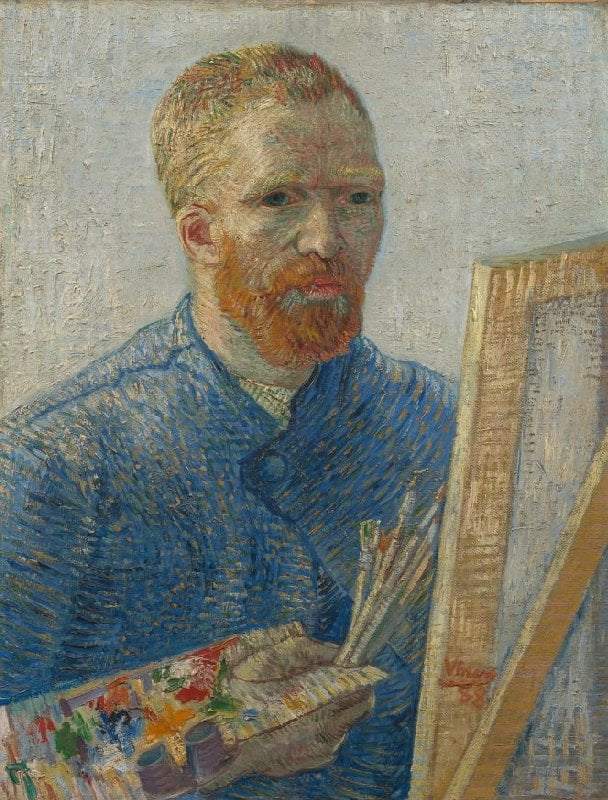Under the Microscope
Throughout the decades, many of Van Gogh’s paintings have undergone scientific analysis to determine not only the specific pigments used, but also varnish layers.
As we know, one of the varnishes Vincent used was egg white – In a letter to Theo dated Monday, 24 September 1883, Vincent wrote:
“Today I’m sending a package of 3 studies which I hope are dry enough. However, if they stick to the sheet of paper I laid on them as a precaution, soak them off with lukewarm water. The smallest one, in particular, has sunk in a lot, go over it with the white of an egg in about a week, or some varnish in a month’s time, to lift them.”
One of the earlier ‘so-called’ conservators of Van Gogh paintings, one Jan Cornelis Traas, also applied varnish, although he applied alkyd resin during relining, both in 1927 and again in 1961 – I have no idea what type of varnish is used on Farmhouse with Barn and Well, but here are some microscopic images and shaky videos I took using a cheap microscope I purchased from Amazon. I will be adding more shortly.
YES, Artificial Ultramarine, Zinc White, and black ground have been analyzed and confirmed!
Two paint samples were extracted from the edges of Farmhouse with Barn and Well and analyzed using a polarizing light microscope by a top American paint historian – ZINC WHITE was found as well as ARTIFICIAL ULTRAMARINE / zinc oxide, zinc, white, is the white hiding pigment in the blue oil paint WHICH MAKE UP THE CLOUDS – BOTH of these pigments were used by Vincent – Underlying black ground was also observed, as well as many layers of mixed paints.


When Vincent reused his canvases several layers of pigment and ground were applied; scientific research gives in-depth information demonstrating Van Gogh’s paint layers and pigment particles similar to those shown here.
Partial edge of the painting which appears to show a resin or glue-like substance, white ground or zinc white, and possibly dark ground.

All of the colors seen here on Van Gogh’s palette from his 1887/88 self-portrait as a painter can be found on Farmhouse with Barn and Well. – Note: the video below examines one edge of the painting where pigment particles are observed






